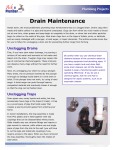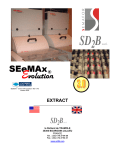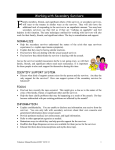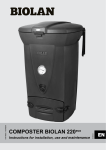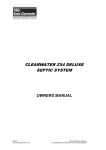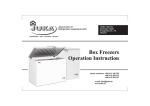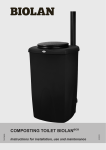Download sustainable PRINCETON BUILD A BIN
Transcript
sustainable PRINCETON BUILD A BIN Compost Bin Assembly Instructions & User Manual Required Materials and Tools 1. 2. 3. 4. 5. 6. Bricks or Concrete Blocks 4 Wooden Pallets 3- 2 ½” Hinges 1 Hook and Eye 2” Screws for exterior use Screw driver or cordless drill with screwdriver bit. Assembly in 3 Easy Steps. Step 1 Choose a flat area preferably in partial shade to full shade away from your house. Remove grass or other vegetation so that the compost material will be in direct contact with the soil. OPTIONAL: Layout the bricks or blocks where the four corner of the bin will be to raise the pallets off the ground. If using concrete blocks, set the blocks into the ground a few inches. Bricks can be set directly on level soil. Step 2 Place 3 pallets on the cleared area (or the bricks you laid down) to form the sides and back of the bin and fasten together using screws. Step 3 Place the hinges on one of the side pallets and the eye on the side pallet. Using the 4th pallet as a gate secure the gate pallet to the hinges and install the hook to keep the gate closed. What to put in your Compost Pile Your compost pile should be a mixture of “brown” (carbon rich) and “green” (nitrogen rich) organic material. Using the right mixture of brown to green when building a compost pile encourages the pile to heat up and decompose efficiently. Although nearly any combination of organic materials eventually decomposes, for the most efficient compost pile, a carbon to nitrogen ration of approximately usually 25 to 1 (that is, 25 parts carbon to 1 part nitrogen) works well. See brown and green lists below. Green List (Nitrogen) Brown List (Carbon) • Coffee grounds • Flowers • Fruit & vegetable trimmings • Grass clippings • Green leaves • Sod • • • • • • • • • • Red List (DO NOT COMPOST) Bread Coffee filters Dry leaves Eggshells Hair Lint Shredded paper with no ink Sawdust Straw Tea leaves with bags • • • • • • • • Diseased plants Dog or cat feces Dairy Meat Poultry Desserts Fish Oil/Grease • Invasive weeds Compost Pile Maintenance Keeping the pile moist aids decomposition which is why a shaded area works best. If it is too wet it can become slimy. Turning the pile 2-3 times during the spring summer and fall will help mix the components, aerate the pile and aid decomposition. Compost Pile Troubleshooting Symptom The pile smells bad. Problem Solution Too much moisture. Turn the pile. Too much nitrogen-rich material in the pile. Do not water as often and turn the pile to dry out the material. Add leaves or other carbon-rich material to the pile. The pile will not get hot The pile is attracting flies, or rodents Not enough water. Add water. Pile too small. Gather more material and build the pile at least 3’ x 3’ x 3’. Not enough nitrogen-rich materials in the pile. Mix in fresh nitrogen-rich materials, such as grass or fruit and vegetable trimmings. Particle size too large. Chop or grind material to reduce the particle size. Protein-rich, fatty, or sugary foods are present in the pile. DO NOT put meat, bones, oily foods, and dairy products in the compost pile. Food is exposed Bury the fruit and vegetable trimmings at least 6-12 inches deep Add leaves or other carbon-rich material to the pile.


